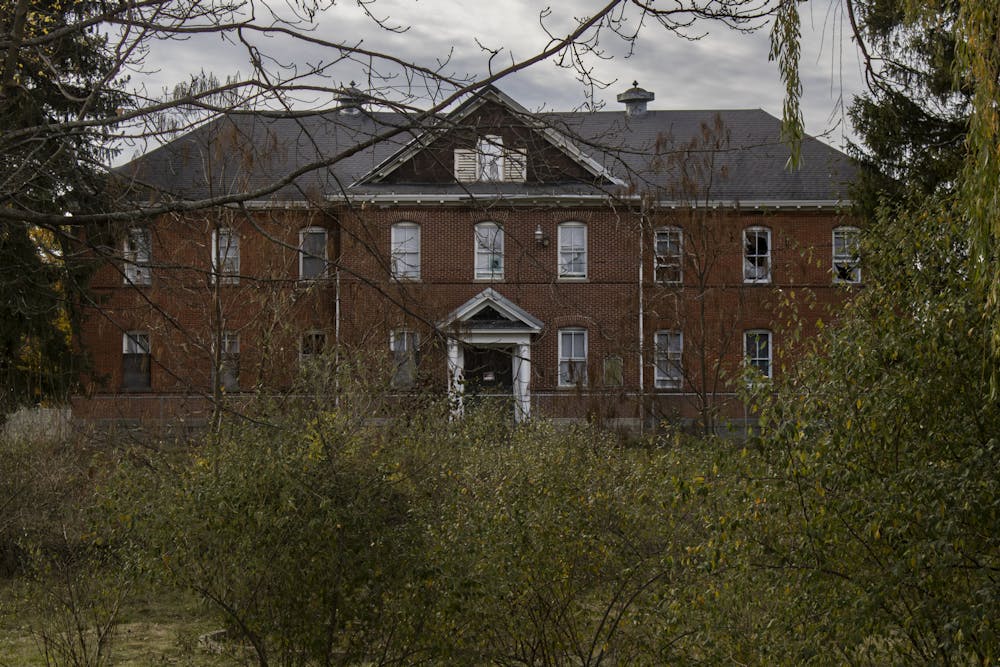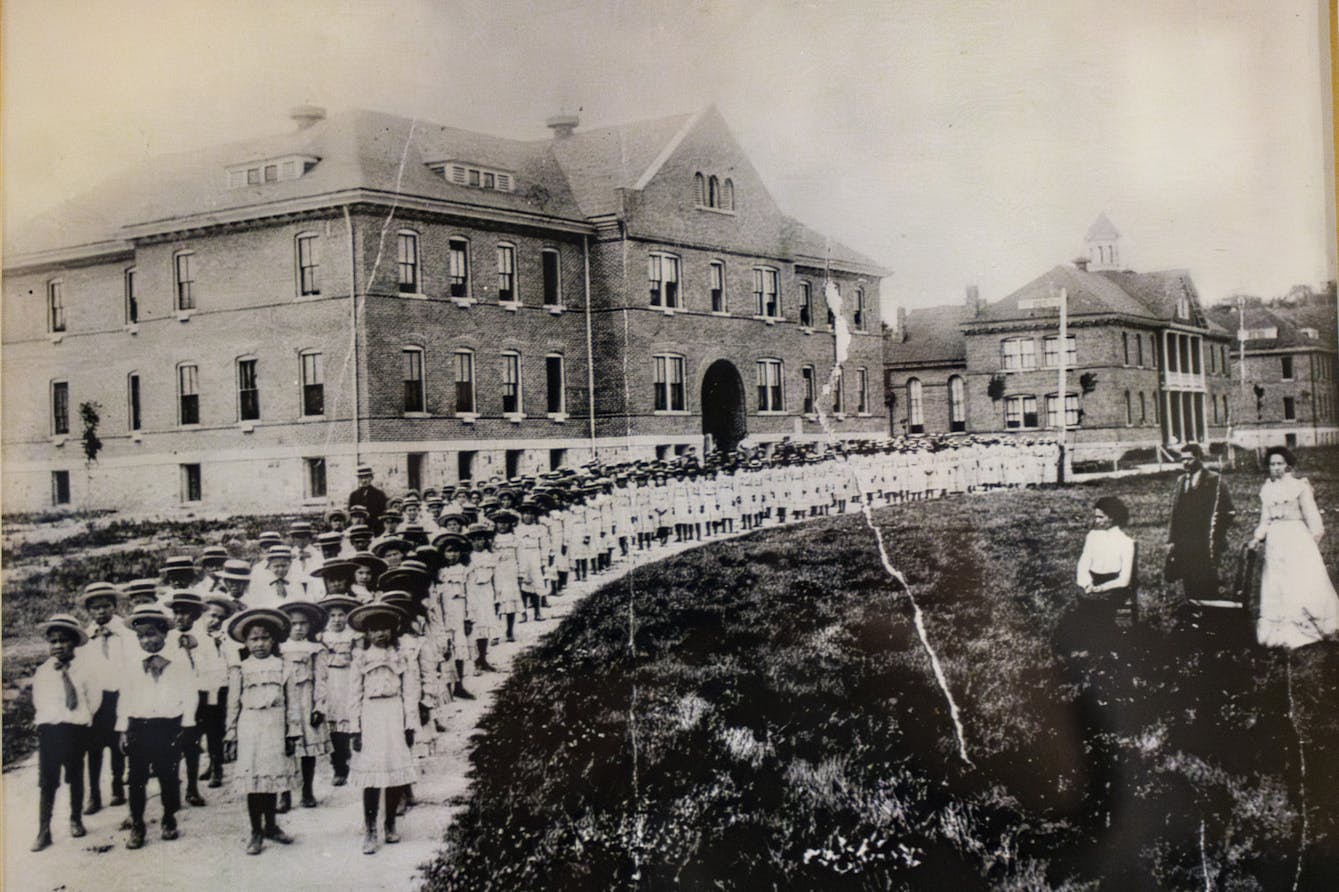Silence speaks
Saginaw Chippewa Indian Tribe aims to renovate parts of industrial school

A boarded-up schoolhouse on the campus of the Mount Pleasant Indian Industrial Boarding School. The site is currently closed to the public, with "No Trespassing" signs stationed around the property. (CM Life | Blace Carpenter)
The Saginaw Chippewa Indian Tribe (SCIT) is looking into a five to 10-year plan to renovate and restore the remaining buildings of the Mount Pleasant Indian Industrial Boarding School (MIIBS) in the hopes of opening the campus to the public and honoring those affected by its dreadful history.
Christian Nakarado is the architect behind the school’s restoration. He said that some of the
buildings on Crawford Road just north of Pickard Road may remain closed after the project’s completion.
“The phrase we keep using is ‘we want the silence inside these buildings to speak for themselves,’” Nakarado said. “That probably means that we don’t renovate for the reuse of any of the buildings except for the workshop. We want to encourage people who might visit the site to engage in a quiet reflection.”
He said the school’s workshop will be turned into a community center where the visitors can attend events.
“There is definitely a plan to open up the workshop building for a more consistent presence on the site every day of the week,” Nakarado said. “There are a couple of different tribal programs that we’re thinking might go in there: … the tribal language program, perhaps parts of the Tribal Historic Preservation Office’s activities.
“What we planned for on the ground floor of that building is kind of multi-purpose community space that could serve all kinds of different functions.”
A space to heal
Tribal Historic Preservation Officer and Chairwoman of the MIIBS Committee Marcella Hadden meets monthly with her team to discuss updates on the school.
She said there is a lot of work that will be done to the campus in the coming years. The first on her to-do list is to remove toxic materials from the buildings.
“The buildings are contaminated but we are
restoring them right now,” Hadden said. “We did get a grant from the Bipartisan Infrastructure Law … to get rid of all the lead and asbestos.”
She said other plans for this project include a potential memorial garden and ensuring that the buildings’ structural integrity is safe for visitors.
“It’s going to encompass culture, language, healing and arts,” Hadden said.
Currently, the campus is closed to the public.

A photograph of students lined up in front of the MIIBS, circa 1910. (Photo Courtesy of the Saginaw Chippewa Indian tribe.)
The dark history of MIIBS
The creation of Native American boarding schools can be traced to United States Army Officer Richard Henry Pratt, who socially experimented on Apache prisoners of war at Fort Marion, Florida, after the Red River War. He forced the Apache men to cut their hair, learn English and dress in traditional military uniforms.
In 1879, he opened Carlisle Indian Industrial School and used the same method of assimilation on Native American children. In 1891, the U.S.
Congress funded the creation of boarding schools for native children across the country, according to the Ziibiwing Center.
The MIIBS opened its doors on June 30, 1893.
“ ‘Kill the Indian and save the man’ was Richard Pratt’s model,” Hadden said. “That’s how it started.”
For over four decades, children were taken from their homes and sent to the MIIBS, where they were forced to learn English, convert to Christianity and stripped of their traditions. Many lost contact with their families, according to Hadden.
She said students had schedules designed similarly to those of officers in the military.
“The children were up at 5 a.m, they had very little free time and then they were taught writing and reading,” Hadden said. “The schools were run by churches, the Catholics, Methodists, but they were run in a military form.”
In 1928, the U.S. government released the Meriam Report, which found that disease was running rampant through the schools and that students were extremely malnourished.
The MIIBS continued operating for another six years, and officially closed on June 6, 1934.
According to Hadden and research from the Ziibiwing Center, 220 students died during their time in the school.
“Think about that in today’s society,” Hadden said. “Could you imagine just one child passing away in a boarding school today?”
Every June 6, the Tribe opens the school campus for the “Honoring, Healing and Remembering” event, where members honor the students who passed and those who were affected by the abuse caused by the industrial school.



